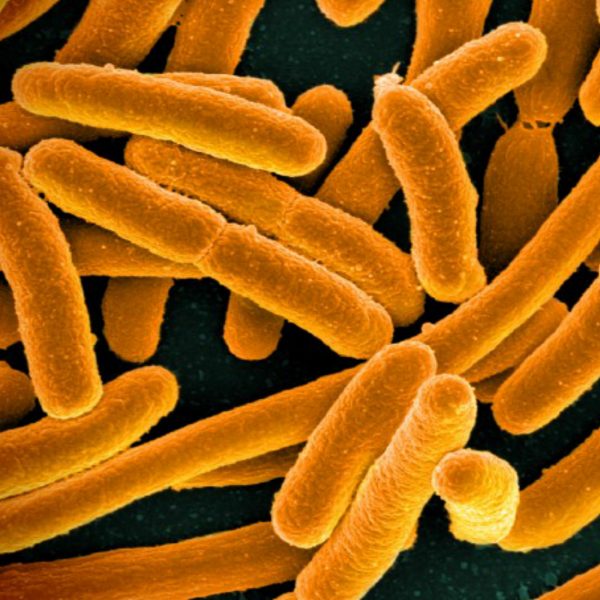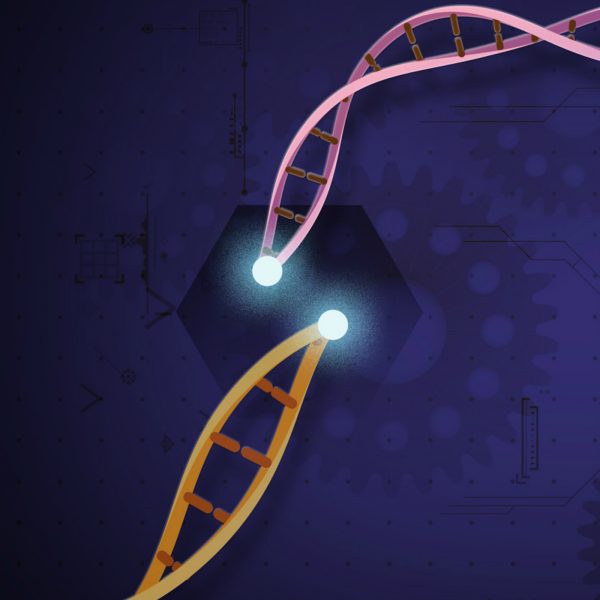
Recently scientists celebrated the creation of an entirely new type of E. coli. It might be hard to imagine being excited about having more of this bacteria around, but as it turns out, E. coli in the lab is far more desirable than in your kitchen or favorite restaurant. In fact, recent breakthroughs with the bacteria mark a huge step forward for synthetic biology on the whole. England’s Medical Research Council Laboratory of Molecular Biology published a paper illustrating that they’ve recoded E. coli with a genome that is entirely synthetic. What’s more, they showed that an artificial genome is capable of more than we realized.
Creating E. coli, with an entirely synthetic genetic code represents a major step forward, which could lead to everything from a “disease-proof” species of bacteria for medical purposes to sustainable bioplastics that could help fight global warming.
What is a synthetic genome?
First thing first, a synthetic genome is one that is created in a lab. In this case, the researchers artificially manufactured (re-wrote) the genome as a series of DNA fragments, then replaced the naturally occurring genome of living E. coli piece by piece until they had an organism with a completely synthetic genome. The E. coli genome these scientists generated is four times larger than the previous record for largest synthetic genome, showing the scalability of their technology. However, perhaps more important is what these researchers accomplished in their rewriting of E. coli.
 To understand that accomplishment, we need to revisit some of the fundamentals of DNA.
To understand that accomplishment, we need to revisit some of the fundamentals of DNA.
Life on earth is written in a language consisting of only a few letters of genetic code, each one representing a different nucleotide. We talked about these nucleotides in another article about synthetic DNA:
One of the first things you learn when studying DNA is that it’s made up of four letters — GCAT. The letters stand for guanine, cytosine, adenine and thymine, the four chemicals that link and pair to create the genetic code of every living thing on earth.
In that piece, scientists showed they could expand the genetic language by building four new, synthetic nucleotides. This time, scientists are sticking to the big four, but they are changing the way nature builds from them.
The four nucleotides get combined in three letter combinations to form what are called codons. There are 64 possible different codons (4x4x4). The codons correspond with amino acids, signaling the specific order those amino acids are combined into proteins, the building blocks of life as we know it.
That part is confusing, so let’s break it down one more time:
- DNA is made up of nucleotides (GCAT)
- A set of three nucleotides is called a codon
- Codons correspond with amino acids
- Amino acids build into proteins
- Proteins create our world
Here’s where we get into the wonder of what was accomplished by creating a synthetic genome for E. coli.
There are 64 codons but only 20 amino acids. That means that each amino acid can be ‘summoned’ by several different codons, or synonyms. When these researchers went to rewrite the genome of E. coli, they determined that they could safely eliminate some of those synonyms, meaning that they ultimately completed the genome using only 61 codons instead of the full 64. Gizmodo explained the concept quite cleanly in their article on the research:
The researchers wanted to see if they could rewrite the E. coli bacteria’s genome with fewer codons, like rewriting the dictionary but representing all hard “k” sounds with only the letter k, instead of sometimes using c or q as the English language does.
This bacterial re-write required changing over 18,000 letters of genetic code. By successfully creating a genome that uses 61 codons instead of 64, these scientists have modified the E. coli instruction book in a way that opens a host of new possibilities for synthetic biology.
Changing what we can do with the genome
The sheer magnitude of this project expands our thinking about how much we can genetically synthesize. It also reveals something fundamental about how malleable the genome actually is.
 What’s more, the researchers here freed up three codons which are no longer needed for the synthetic E. coli to replicate. The lead author on the paper, Dr. Jason Chin, described the significance of this finding to the Nature podcast. He explained that the newly-freed codons could potentially be reprogrammed to produce artificial molecules outside of the typical 20 amino acids found in nature.
What’s more, the researchers here freed up three codons which are no longer needed for the synthetic E. coli to replicate. The lead author on the paper, Dr. Jason Chin, described the significance of this finding to the Nature podcast. He explained that the newly-freed codons could potentially be reprogrammed to produce artificial molecules outside of the typical 20 amino acids found in nature.
The now-unassigned codons could also be used to improve the properties of the organism itself. For example, the synthetic E. coli may be more resistant to viruses, which would require the typical arrangement of codons to produce their viral proteins. With those codons rearranged, the virus couldn’t hijack the bacteria’s machinery. This resistance would mean the bacteria could be used more reliably in medicine. Because the genome of E. coli is relatively easy to manipulate, it’s already used in the production of some drugs and even to carry treatments into the body. A more resilient version of the bacteria might have even greater medical potential.
Being able to use the E. coli genome to produce artificial molecules could also help with the production of materials like biopolymers. Scientists have long explored the potential of using bacteria to create new materials and even fuels. Having open codons could make that even more feasible.
Improving sustainability through genomics
When you follow synthetic biology through to its next logical conclusions, you’ll find a lot of talk about genetically engineering organisms to produce materials. Often these new biological material would take the place of material produced through the use of oil and other natural resources. Using organisms to produce where we previously used finite resources leads to greater sustainability and potentially less environmental impact.
The Genetic Literacy Project discussed synthetic biology and its potential recently. Here are a few of the potential applications they listed:
-
Production of sustainable fuels, such as sugars and biofuels that can substitute for petroleum.
-
Production of synthetic rubber.
-
Transformation of agricultural waste into green chemicals
The E. coli genome is already renowned for its flexibility, often readily accepting genetic changes that more complicated organisms might resist. Now that scientists have opened up codons in the bacteria, the potential seems even more impressive.
 Reconstructing our World
Reconstructing our World
Freeing up codons shows how far we have come in our understanding of the genome, but it also shows how much we have to learn. For example, the 61-codon synthetic E. coli grows a little larger than the bacteria typically would, and replicates a little slower. Researchers are working to figure that out. Even with the reduction from 64 to 61 codons, there’s still a lot of redundancy to encode 20 amino acids. Other labs are seeking to trim the number of necessary codons to 57 (which requires over 62,000 DNA edits), but mysteriously, some of those substitutions appear to be lethal to the E. coli.
All told, synthetic E. coli tells us a lot about the state of genomics by illustrating the vast potential and enormous amount of exploration still to do.
To schedule a media interview with Dr. Neil Lamb or to invite him to speak at an event or conference, please contact Margetta Thomas by email at mthomas@hudsonalpha.org or by phone: Office (256) 327-0425 | Cell (256) 937-8210
Get the Latest Sharable Science Delivered Straight to Your Inbox!
[gravityform id=19 title=false description=false ajax=true][wprpw_display_layout id=8]


